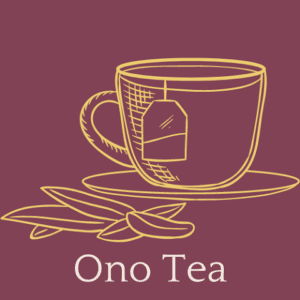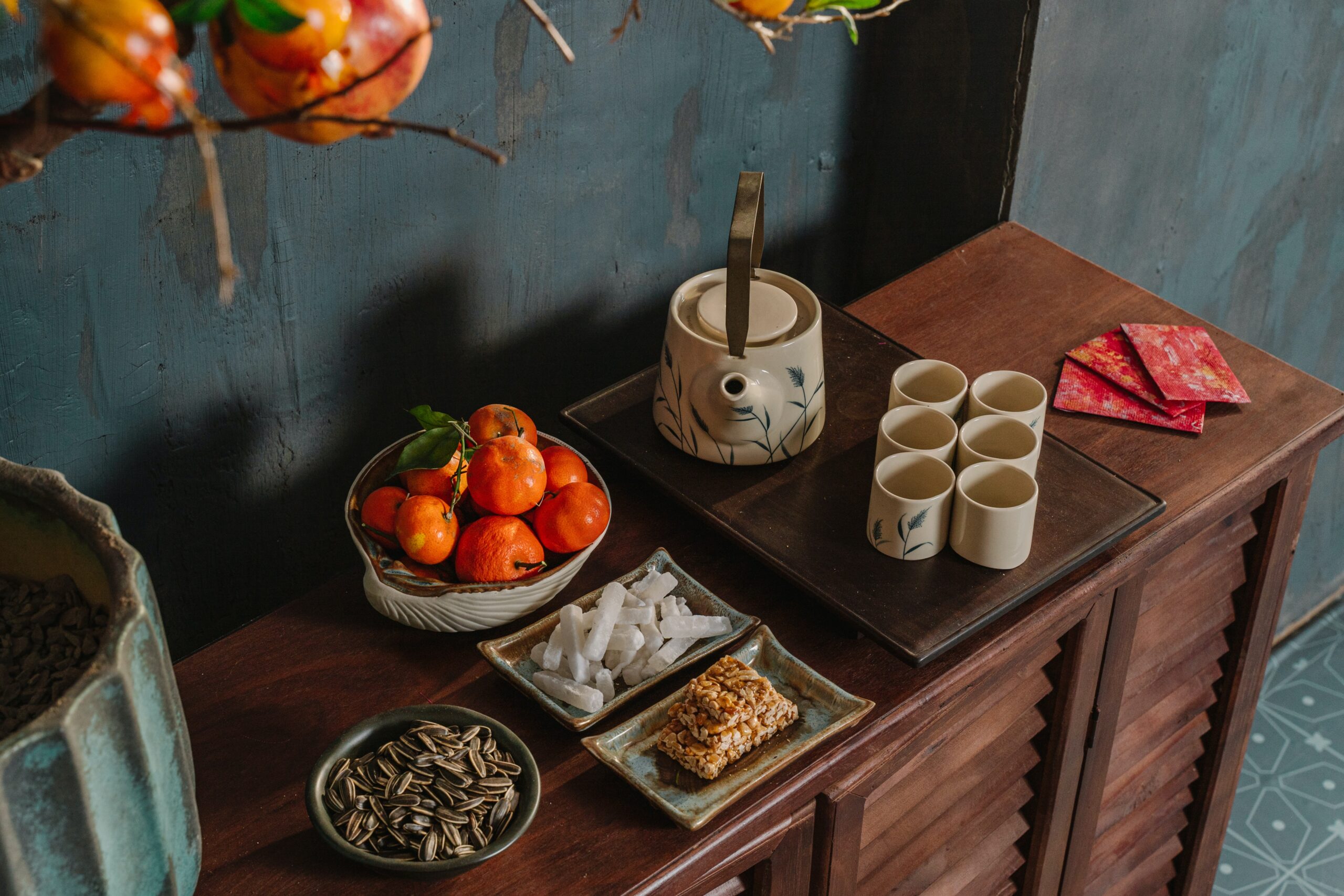In this article, we talk about oolong tea and the ingredients you can prepare it with to enhance it. Oolong is a Chinese tea that you might confuse for both green and black tea. It actually comes from the Camellia Sinensis plant, which also makes black tea and green tea.
But oolong is its own thing. It is not classified as either green or black tea.
Good-quality oolong tea is famous for its unique taste. You can add sweeteners, milk, or citrus flavor to boost the taste. Find out more as we go.
Making Oolong Tea
It can be complex to make and have different flavors. How exactly it turns out depends on how you make it. Also, the way it’s processed can make it taste more like green or black tea. Oolong tea leaves can be broadly grouped into two categories: Green Oolong and Dark Oolong. You can find them in loose-leaf tea or even in tea bags, whatever floats your boat.
Green Oolongs are less oxidized, so they are kind of like green tea. The leaves are all green, and the tea you get is light and has a nice aroma. On the other hand, Dark Oolongs are more oxidized, like black tea, but they’re still not the same as green or black tea.
Now, here’s where it gets interesting: oolong tea has different aromas that range from floral and fruity to toasted and nutty.
The level of oxidation and how manufacturers roast it can even change the color of the brewed tea. It can be a light yellow, amber, or even a dark brown, depending on how you vibe with it. And get this: adding different ingredients to the tea can totally switch up the flavor and color. So, it’s all about experimenting and finding your perfect cup of oolong tea, friend.
Simple Steps to Make Oolong Tea
- Begin by boiling water.
- Generally, your water temperature should be between 195°F and 205°F (90°C and 96°C). But following the directions on the box is always a good idea because the required water temperature may vary greatly depending on the exact type of oolong tea you have. Even if you’re a total newbie, if you follow the directions, you can brew the perfect cup every time.
- Afterward, add one teaspoon of loose-leaf oolong to one cup of water. If you are using a tea bag, dip a bag in your cup of hot water.
- Brew the tea leaves for 3 to 5 minutes (or longer, depending on the type of tea) in a tea infuser for teapot.
- Put in your additional ingredients, or serve it plain and drink when it cools a bit.
What to Put in Your Oolong Tea
Although you can drink oolong tea without additional ingredients, many people prefer to add them. If you are wondering what to put in oolong tea, optional flavor-enhancing ingredients to add when you brew oolong tea are:
Sweeteners
If you prefer a sweeter taste, you can add honey, brown sugar, or any other sweetener to the drink. Make sure to stir it well so that everything mixes nicely before you drink. Also, try to be careful in your measurements in order not to take away from the oolong flavor.
Citrus Additives
Squeezing fresh lemon or lime juice into your oolong tea can give it just the right flavor. Also, consider squeezing oranges or other citrus fruits into your tea. The tea takes on a refreshing flavor that you will love if you are a citrus lover.
Herbs
Use herbs and spices like cinnamon, ginger, or mint in your tea to give it different, distinct tastes. Herbs and spices particularly pair nicely with the taste profile of oolong teas.
Milk or Cream
If you are a fan of milk tea, you will love this idea. Some people love to add milk or some kind of cream to their teas. The taste of oolong milk tea is creamy and has a slightly richer texture than regular oolong tea. This might become your holy grail method of brewing and drinking your oolong.
Nuts or Nut Milk
You may also want a dairy-free option for your oolong milk tea for any reason. Consider adding crushed nuts like almonds, cashews, hazelnuts, or even a splash of coconut milk. Not only will you have a creamy, rich tea, but your drink will have a nutty undertone, which you may love.
Flavor Extracts
Another idea is to add a few drops of the extract of your favorite flavor. If you are a vanilla lover, add a few drops of vanilla extract to oolong tea for a sweet and aromatic dimension that complements its natural flavors. You can try different extracts until you find your favorite.
Fresh Fruits
You can add slices of fresh fruits like strawberries, peaches, or oranges to infuse your tea with their natural flavors. This works quite well if you’re making iced oolong tea. They make your tea extra refreshing and healthy.
Mint Leaves
Adding a few fresh mint leaves can provide a refreshing and aromatic twist to your oolong tea.
Fruit Juice
Enhance the natural fruitiness of oolong tea by adding a splash of fruit juice. Orange, peach, or pineapple juice can introduce a burst of sweetness to the tea. Add less conventional juice if you are feeling adventurous. For oolong iced tea, simply add ice cubes.
Related video: https://youtu.be/8i59xhXLv1c
Benefits of Oolong Tea
Consuming Oolong Tea leaves has many health benefits due to its natural ingredients and antioxidant characteristics.
For therapeutic purposes, it is frequently steeped in water.
- There is anecdotal evidence that oolong tea may help you lose weight. When you drink it as part of a balanced diet and lifestyle, it may increase your metabolism and fat oxidation, thereby leading to weight control.
- Also, regular Oolong Tea use seems to enhance heart health. It may minimize your risk of having heart disease by decreasing your blood pressure and cholesterol levels.
- Additionally, Oolong Tea helps food digestion and eases digestive disorders. It can help with fat breakdown, boost the production of digestive enzymes, and decrease inflammation in the body.
- Oolong Tea is also rich in antioxidants. These antioxidants might improve your immunity and even possibly slow the aging process.
- Oolong Tea can increase your mental focus and alertness. Caffeine, which is in Oolong tea, can help raise your energy. It also has other chemicals that may improve your cognitive function.
- Lastly, Oolong Tea’s polyphenols and antioxidants may help your skin. It can help you maintain good skin by reducing the effects of aging. Basically, it may help you glow and have a radiant complexion when you drink it regularly.
Is It Safe to Drink Oolong Tea Every Day?
In general, we believe most people can safely consume oolong tea in moderation. But you should keep the following in mind:
Caffeine Content
Oolong tea contains caffeine, although in lower concentrations than black tea or coffee. If you are sensitive, you may want to avoid other caffeinated beverages while taking oolong. There are also decaffeinated kinds of oolong tea if you are sensitive to caffeine or have certain medical conditions, such as anxiety or heart issues.
Quality and Sourcing
To reduce the risk of impurities or pesticides, make sure to get high-quality oolong tea from reliable suppliers.
Personal Tolerance
Reactions to oolong tea will vary from person to person. If ingested in excess, some people may have negative consequences like stomach discomfort or insomnia. It’s crucial to pay attention to your body and modify your intake.
Health Conditions and Drug Interactions
It is best to speak with your doctor if you have any questions about whether drinking oolong tea may affect your treatment plan or make any existing health issues worse, especially if you have any specific health conditions or are taking any drugs.
When to Drink Oolong Tea
Here’s the deal: When it comes to drinking oolong tea, it’s all about what floats your boat and fits your lifestyle.
Some people take it every day, while others save it for special moments. First things first, starting your day with oolong tea is a great idea. It has a moderate amount of caffeine. So while it won’t do what your morning coffee will, it is a smoother alternative to coffee.
Also, after a meal is another prime time for oolong tea. It’s said to help with digestion, breaking down fat, and boosting the production of digestive enzymes. Plus, its fancy flavor makes it a nice palate cleanser. And when that afternoon slump hits, oolong tea is your secret weapon. It can bring mental clarity and remove all the weariness without the coffee jitters. It’s basically revival in a cup!
And there’s more. Imagine treating yourself to a cozy tea break or making it part of your self-care routine.
Oolong tea is also the perfect addition to afternoon tea parties or any social gathering. It’ll definitely impress your friends and visitors.
In other words, grab a cup of oolong tea whenever you please. From morning fuel to an after-meal digestion aid, an afternoon boost to a calming ritual, or even a party favorite, this tea has got your back in all the best ways.

Final Thoughts on Oolong Tea and What to Put In It
Tea drinkers believe that loose-leaf teas are the finest option, regardless of type. Cloth tea bags can overpower the subtle flavors of oolong tea.
So for your first try, you should probably go for loose leaves to really soak in the flavor. It has an interesting flavor that you want to savor. Therefore, you should probably also take it without additional ingredients at first. Then, when you are feeling up for it, you can add sweeteners, citrus segments, herbs, spices, or even a splash of milk.
You definitely won’t run out of ideas if you are creative enough. You can enhance the flavor of the tea or create varied flavor combinations that allow you to tailor the tea to your preferences.
The secret is to unleash your inner scientist!
Feel free to mix and match different ingredients and adjust the amounts to suit your taste buds. This tea is so versatile that you can enjoy it in so many ways. So, go ahead and try out different flavors until you find your perfect cup! Now, about quality. If you want to experience the finest flavor and maybe even some health benefits, make sure to get your hands on high-quality tea leaves from trusted sources.
Loose tea leaves are usually the best because they let the leaves soak freely and release all their amazing flavor.
But remember to keep it chilled and moderate. While oolong tea can have its health perks, it’s all about balance. Don’t go overboard! Keep an eye on your caffeine intake, especially if you’re sensitive to caffeine or have any specific health issues going on. It’s all about sipping in moderation and taking care of yourself at the end of the day.

